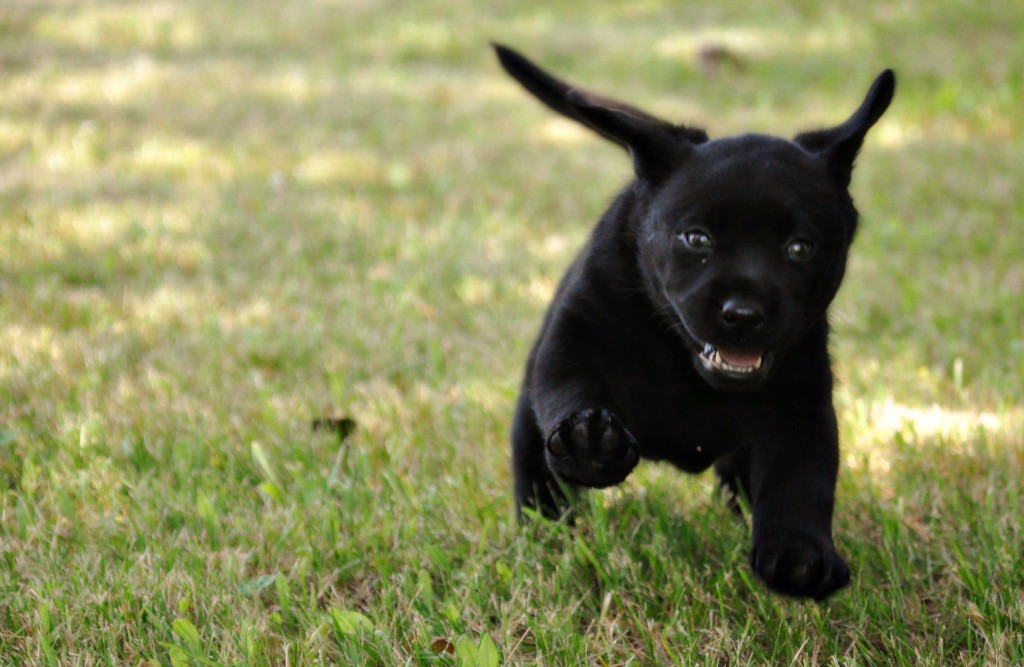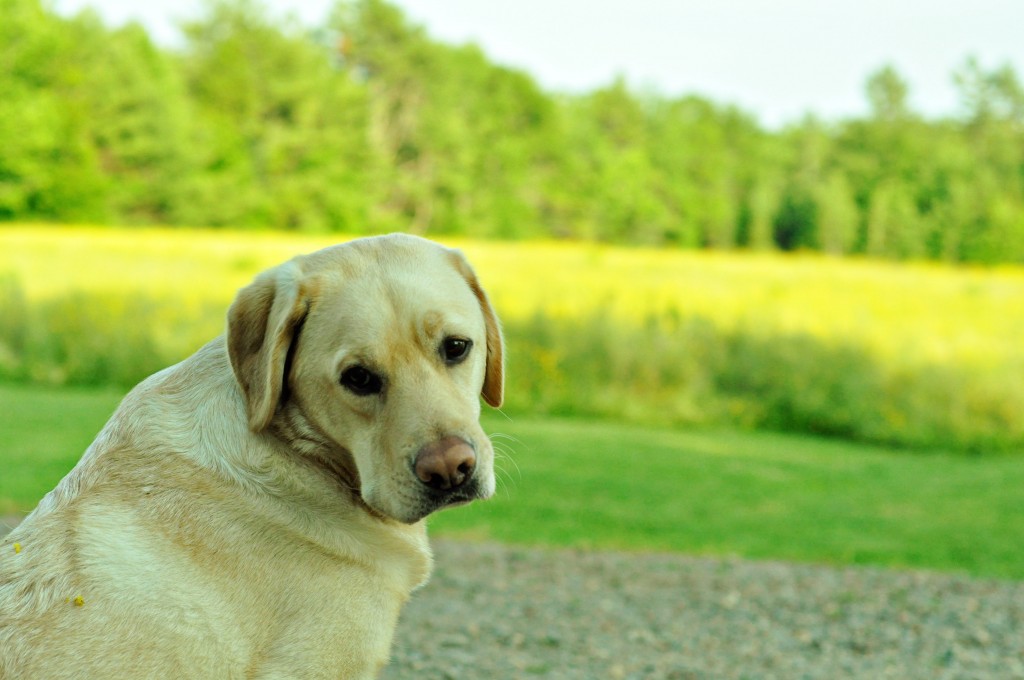![5 Reasons Why Dogs Should Attend Doggy Day Care]()
by Erin Bessey | Dec 8, 2014 | Business

Why Doggy Day Care Is A Good Idea
It seems like a great solution to many trainers to recommend doggy day care to the average client. Many dogs lack stimulation, sufficient outlets for their energy, or opportunities to socialize with other dogs. Here are five reasons why you might consider sending a dog to doggy day care – or starting a doggy day care yourself.
1. Exercise & Socialization
Daycare provides the dog with play times throughout the day to express normal doggy behavior. They have the opportunity to meet and play with new dogs and learn how to properly socialize and interact with other dogs. Naturally, day cares run differently. Some provide dogs access to each other all day long for endless play while others have set play times and playgroups for the dogs.
2. Human Contact
During the day while the owner is away at work, the dog doesn’t have to stay home alone. The staff members of the day care interact with the dogs regularly. They are there to interact during play if the dog desires, treats during quiet times, or a good ol’ scratch behind the ear and cuddles.
3. Expert-Supervised Playtime
Often owners themselves are not comfortable monitoring play between dogs. They aren’t familiar with what is appropriate and what is dangerous. A proper daycare has experienced staff that have had training to interpret dog body language so they can ensure all the dogs are comfortable.
4. Relief From Boredom
Crates get a bad reputation sometimes from pet owners. They don’t want to leave their dog crated while they work or when they aren’t home. Not utilizing a crate and establishing good house habits can potentially set the dog up for destructive behaviors when alone. To compromise, owners can send the dog to daycare where they will have plenty of stimulation and opportunities to prevent any boredom.
5. A Good Solution For Busy Owners
Some owners feel guilty for working more than 8 hours and leaving their dog at home. Day care will allow the dog multiple opportunities to potty and be entertained while the owner is away.
It is essential to take the dog’s personality and temperament in to consideration when deciding if doggy day care is right for the dog. The five reasons above list some benefits to day care but day care isn’t for all dogs. Robin Bennett is an outstanding resource for dog-dog interactions and an expert in running great doggy day cares. Check out her articles on doggy day cares here.
Stay tuned for a follow-up article on reasons why some dogs shouldn’t attend doggy day care.
Get Dog Training Business Tips!
Receive valuable dog training business tips and resources every week! Subscribe to The Modern Dog Trainer now by submitting your name and email below.
[mc4wp_form]
![5 Reasons Why Dogs Should Attend Doggy Day Care]()
by Erin Bessey | Nov 18, 2014 | Training Methods
Owners and trainers have come a long way from the punitive methods of training. While it is no secret some still use punishment, many have converted their methods to the more humane, scientifically proven uses of positive reinforcement. Even with the best intentions and use of rewards there are ways that Owners and trainers may unintentionally still be punishing their dogs.

Image via Erin Bessey
It’s Not Always Prong, Shock, or Choke Collars
It is basic knowledge among dog trainers that behaviors that are rewarded will be repeated. It is on that premise that clients are taught how to train their dogs basic behaviors or modify the problem ones. When the word punishment is tossed around most people imagine choke, prong, or shock collars, hitting, slapping, or even kicking the dog. However, there are subtle ways owners might be punishing their dogs and ruining their trained behaviors.
Owners come to class with their dog wearing a standard flat collar, occasionally a harness or gentle leader. A choice made with the best intentions. An owner can still unintentionally be a compulsion trainer when their dog is wearing a flat collar. Imagine the dog who excitedly lunges to the end of his leash and is spun around because he reaches the end with such force. He is receiving a correction. The intensity of the correction may be less than a choke or prong collar because a flat collar does not offer the choking sensation. If it were a leave-it exercise the dog may only respond to leave-it on leash because if he makes an attempt to indulge in the forbidden item he will be jolted backwards. If you find clients manipulating their dog with the leash encourage them to come to class with their dog on a harness to reduce the accidental use of punishment.
Reinforcement Has To Be Rewarding in the Dog’s Eyes
Calming signals are a foreign matter to many dog owners. They don’t recognize their intentions as being intrusive or unpleasant for the dog. A perfectly good recall can be quickly ruined by unintentional punishment. Owners like to pet their dogs as means of encouragement or reinforcement but some dogs don’t enjoy this. A dog that is sensitive to touch may not like the pat on the head after coming back to the owner resulting in a slower recall. Emphasize that to reinforce the behavior it has to be rewarding in the dog’s eye. For a dog to leave the yard (which he finds highly rewarding) to come for his recall treat, to then be locked in the house all day will turn into the dog that takes his sweet time getting back to the house. Encourage owners to pair the giving of any treats with petting to create petting as a secondary reinforcer. When a dog is brought inside after playing, reward with the recall treat but then provide him with something fun and enriching to do for 5-10 minutes.
Listen to how owners are describing the behavior and see if there is an area that can be identified as unpleasant for the dog. Observe the interactions between owner and dog to see if the dog is loving it as much as the owner. It might also be very beneficial to teach owners about calming signals so they can learn to determine these things on their own.
Recommended Articles by The Modern Dog Trainer
![5 Reasons Why Dogs Should Attend Doggy Day Care]()
by Erin Bessey | Nov 3, 2014 | Training Methods
In group training classes it is common to touch base with the students on how their week went. Without missing a beat they will inform you of everything that went wrong. The dog stole the cat food, they chased the cat across the yard, or wouldn’t leave the turkey poop in the field. It is so easy to get stuck on the negative that it’s time to shift the focus and start asking “What went well?” encouraging owners to focus on the positive.

Image via Erin Bessey
There Are No Bad Dogs, Some Just Need Extra Guidance and Training
Encourage owners to look at the dog’s behavior objectively. Help them realize that the dog has been set up to act that way. They have been influenced by the environment, genetics, or information they have received from the handler. When observing the dog, help them ask “Why is my dog doing this?”
Reinforce the Behaviors You Want to See Again Rather Than Reinforcing the Dog
Don’t punish the dog for acting like a dog. Barking, chewing, pulling on the leash, not coming when called, pottying inside and so on are all normal doggie behaviors that most people don’t like. Owners usually view behaviors as bad, good, abnormal, or normal but it really boils down to desirable and undesirable behaviors which should be established by the owner.
Time to Rephrase
To replace the “bad” behavior, train an alternative “good” behavior while managing the environment to prevent the “bad” behavior from occurring. Reinforce the absence of the undesirable behavior or interrupt it with a trained behavior before it is reinforced. What speaking with clients avoid saying, “We don’t like when the dog…” and consider saying “We want the dog to …” or “We need to work on….” For example, instead of saying “We don’t want the dog to jump on visitors when they come over,” we could say, “We want the dog to lie down on his mat when visitors come over” or “We need to work on polite greetings with the dog.” It gives the owner a picture of what they do want and set an obtainable goal.
Once the goal has been set, make it a habit to check in each week with them and ask “What went well?” It will keep the client on track to reach their goal and remind them to focus on the positive which, as we know, with practice will get easier.
What other questions could you ask clients to help them think positive and gain information about their progress?
![5 Reasons Why Dogs Should Attend Doggy Day Care]()
by Erin Bessey | Oct 25, 2014 | Business
So you have decided to run your own dog training business but what steps do you need to take to guarantee a successful outcome? Just like a new puppy it requires time, patience, and commitment to be up and running.

Image by Erin Bessey
5 Steps to Building Your Dog Training Business
Work On The Business Part As Much As The Training Part
Work on it, inside and out. It is easy to focus on creating the class curriculum and training the clients and dogs because that is the fun stuff. If you are just starting your business you are the secretary, bookkeeper, marketing manager and you need to be certain to work on those areas in order to grow your business.
Stick To Your Schedule
Make a schedule and stick to it. You can make your schedule as flexible as you want or as rigid but find a time for everything (including yourself) and stick to it. Include places for answering e-mails and phone calls, working on marketing, writing articles or research, continuing education, working with your own dogs, etc.
Learn About Modern Marketing Techniques
Marketing can be done without breaking the bank. Word of mouth is wonderful and free, however, it can take a long time to build. You need to stretch outside of your comfort zone and do more than place business cards and brochures in a few locations. Look into writing a column for the town newspaper, introduce yourself to others in different animal related fields (Veterinarians, Dog Groomers, Walkers & Pet Sitters) and reach out to your community and tell them what sets you apart from others in your field.
Make Your Business Valuable
Value your knowledge and skills. You need to become a good sales person and learn to sell yourself and your packages. Even if you are new to your profession you need to charge professional rates. People equate money with value. If you are $20 less than everyone else in your town or surrounding areas it makes people question why, which may work against you.
Be A Professional
Be the dog trainer and have confidence. People come to you because they need help and this is your area of expertise. You know what is best for the dog and owner to be successful. If that means telling people they need 6 sessions to accomplish the end result, explain that to them. Don’t be afraid of the word “No”. To be afraid of losing the client’s business and only suggesting 3 sessions so it doesn’t seem as expensive is a disservice to the client and the dog. Practice exuding confidence and it will become easier with every client. There’s a saying out there, “Fake it ‘til you make it” which applies for every new business venture.
There will be challenges along the way of running your own business but many who have done it will tell you they’d have it no other way. What is the biggest obstacle stopping you from starting your own business?
Recommended Articles







